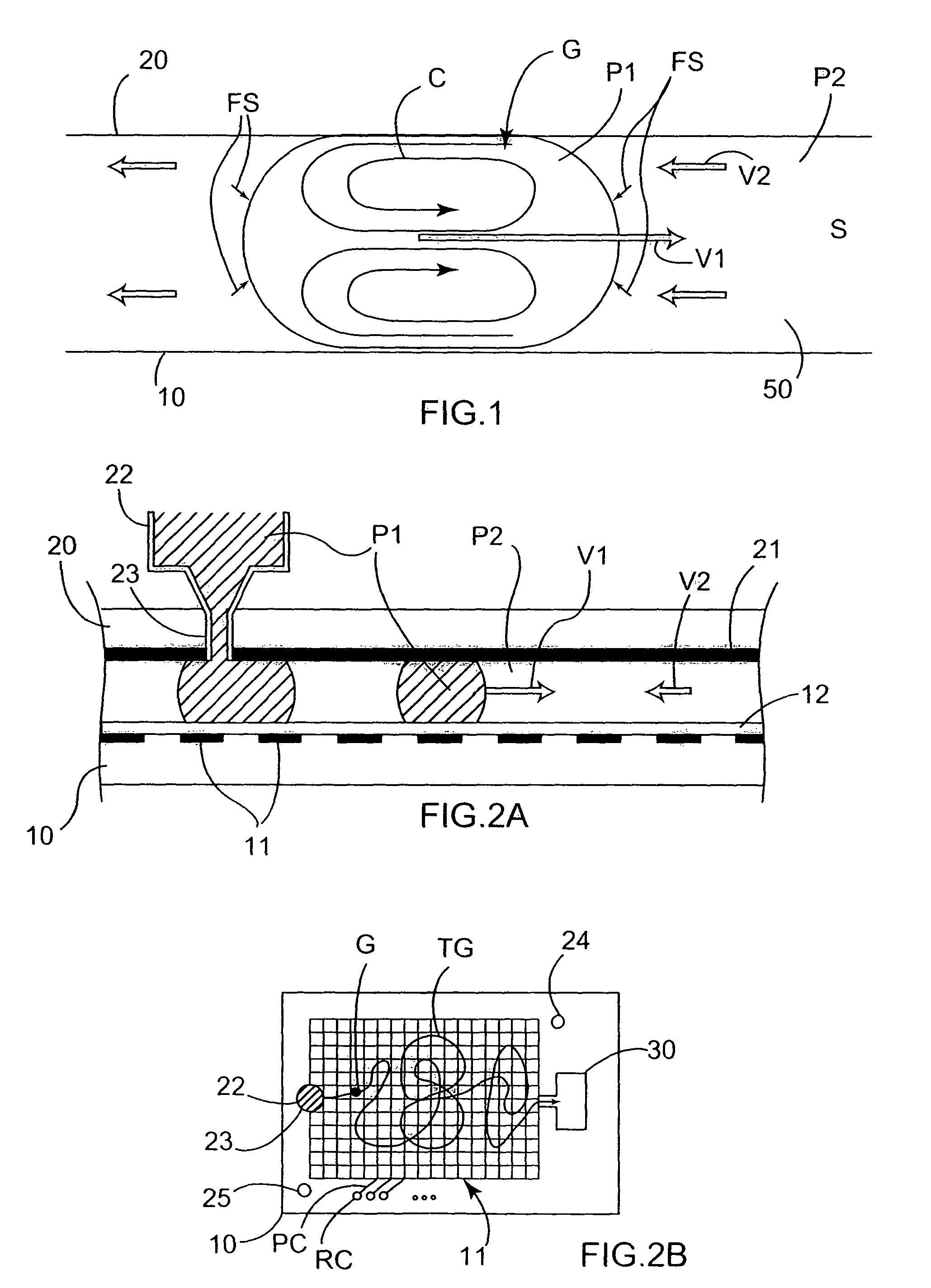Microfluidic method and device for transferring mass between two immiscible phases
a microfluidic and immiscible technology, applied in the direction of semi-permeable membranes, material analysis by electric/magnetic means, electrolysis components, etc., can solve the problems of unstable plane interface between the two fluids and complex implementation
- Summary
- Abstract
- Description
- Claims
- Application Information
AI Technical Summary
Benefits of technology
Problems solved by technology
Method used
Image
Examples
Embodiment Construction
[0038]The principle on which the invention is based can be understood with the help of FIG. 1. A droplet G of a liquid first phase P1 having a volume lying in the range 10 nl to 10 μl, for example, and preferably in the range 100 nl to 1 μl, is placed in a space 50 extending between a bottom plate 10 and a top plate 20, and is immersed in a fluid second phase P2 that is immiscible with the first phase. For example, the first phase P1 may be constituted by an organic solvent such as chloroform or carbon tetrachloride, while the second phase P2 is an aqueous solution. The second phase P2 initially contains a solute S that presents high affinity for the first phase P1. The solute S may be constituted by atoms, ions, simple or complex molecules, cells, or biological entities such as viruses. The solute may also have an affinity for one of the ingredients of the phase P1. A chemical complex or a precipitate incorporating S then forms in the receiving phase P1. The solute S may be also be...
PUM
| Property | Measurement | Unit |
|---|---|---|
| volume | aaaaa | aaaaa |
| volume | aaaaa | aaaaa |
| volume | aaaaa | aaaaa |
Abstract
Description
Claims
Application Information
 Login to View More
Login to View More - R&D
- Intellectual Property
- Life Sciences
- Materials
- Tech Scout
- Unparalleled Data Quality
- Higher Quality Content
- 60% Fewer Hallucinations
Browse by: Latest US Patents, China's latest patents, Technical Efficacy Thesaurus, Application Domain, Technology Topic, Popular Technical Reports.
© 2025 PatSnap. All rights reserved.Legal|Privacy policy|Modern Slavery Act Transparency Statement|Sitemap|About US| Contact US: help@patsnap.com



